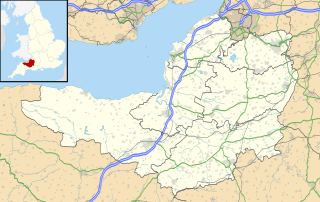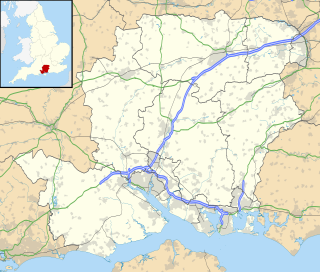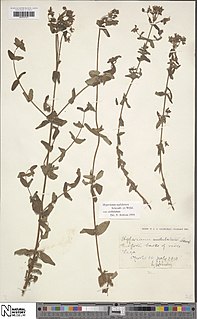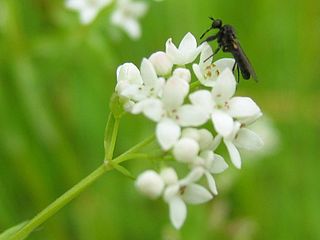
Gordano is an area of North Somerset, in England. It has been designated as a National Nature Reserve.
NVC community W1 is one of the woodland communities in the British National Vegetation Classification system; it is one of seven woodland communities in the NVC classed as "wet woodlands".

Windsor Hill is a 61.8 hectare biological Site of Special Scientific Interest in Princes Risborough in Buckinghamshire. It lies within the Chilterns Area of Outstanding Natural Beauty, and it is featured in the Nature Conservation Review. A small part is managed by the Berkshire, Buckinghamshire and Oxfordshire Wildlife Trust, and access to this area requires a permit.

Yanal Bog is a 1.6 hectare biological Site of Special Scientific Interest on the southern edge of the North Somerset Levels, just north of the village of Sandford, North Somerset. It was notified as an SSSI in 1988.

Lambert's Castle is an Iron Age hill fort in the county of Dorset in southwest England. Since 1981 it has been designated as a Site of Special Scientific Interest (SSSI) on account of its geology, archaeology and ecology.
British NVC community MG10 is one of the mesotrophic grassland communities in the British National Vegetation Classification system. It is one of three communities associated with poorly drained permanent pastures.
NVC community H6 is one of the heath communities in the British National Vegetation Classification system. It is one of five communities categorised as lowland dry heaths.

Jockey fields is an 18.05 hectare biological site of Special Scientific Interest at Walsall Wood, in the West Midlands. The site was notified in 1994 under the Wildlife and Countryside Act 1981 and is currently managed by the Country Trust.

Purple moor grass and rush pastures is a type of Biodiversity Action Plan habitat in the UK. It occurs on poorly drained neutral and acidic soils of the lowlands and upland fringe. It is found in the South West of England, especially in Devon.

Trodds Copse is a 25.23 hectare biological Site of Special Scientific Interest (SSSI), in central Hampshire, notified in 1989. It comprises ancient semi-natural woodland, unimproved meadows and flushes.

Pow Hill Bog is a Site of Special Scientific Interest in the Wear Valley district of County Durham, England. It lies alongside Derwent Reservoir, approximately 2 km north-west of the village of Edmundbyers and adjacent to the Edmundbyers Common portion of the Muggleswick, Stanhope and Edmundbyers Commons and Blanchland Moor SSSI.
NVC community M23 is one of the 38 mire communities in the British National Vegetation Classification system.

Allendale Moors is a Site of Special Scientific Interest (SSSI) in Northumberland, England. The upland moorland ridge site is listed for its heath, flush and upland grassland which provide a habitat for a nationally important assemblage of moorland breeding birds.

Bewick and Beanley Moors is the name given to a Site of Special Scientific Interest (SSSI) in north Northumberland, in the north-east of England. The moors are asserted to be of national importance by Natural England for the extent, quality and diversity of upland types including heaths, fens, wet grassland, flushes, mires and blanket bogs, together creating an extensive mosaic habitat supporting an exceptional community of amphibians. The moors are important, too, for their relict juniper woodland and scrub.
Heath Lake is a designated Site of Special Scientific Interest (SSSI) and local nature reserve based in Berkshire on the edge of Crowthorne. Heath Lake is the only example of an acid lake in Berkshire which still retains its characteristic flora. The site is managed by Wokingham Borough Council

Hypericum undulatum, the wavy St Johns Wort, is a perennial herb native to western Europe and northern Africa. The specific name undulatum is Latin, meaning "wavy" or "undulated", referring, just as the common name, to the wavy leaf margins of the herb. The plant has a diploid number of 16 or 32.













